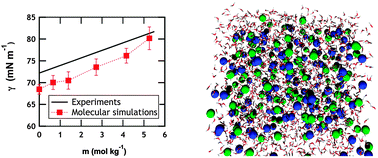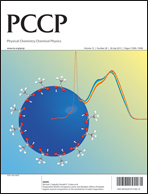Prediction of the concentration dependence of the surface tension and density of salt solutions: atomistic simulations using Drude oscillator polarizable and nonpolarizable models†
Abstract
Molecular simulations using Drude oscillator polarizable and nonpolarizable models for


 Please wait while we load your content...
Please wait while we load your content...